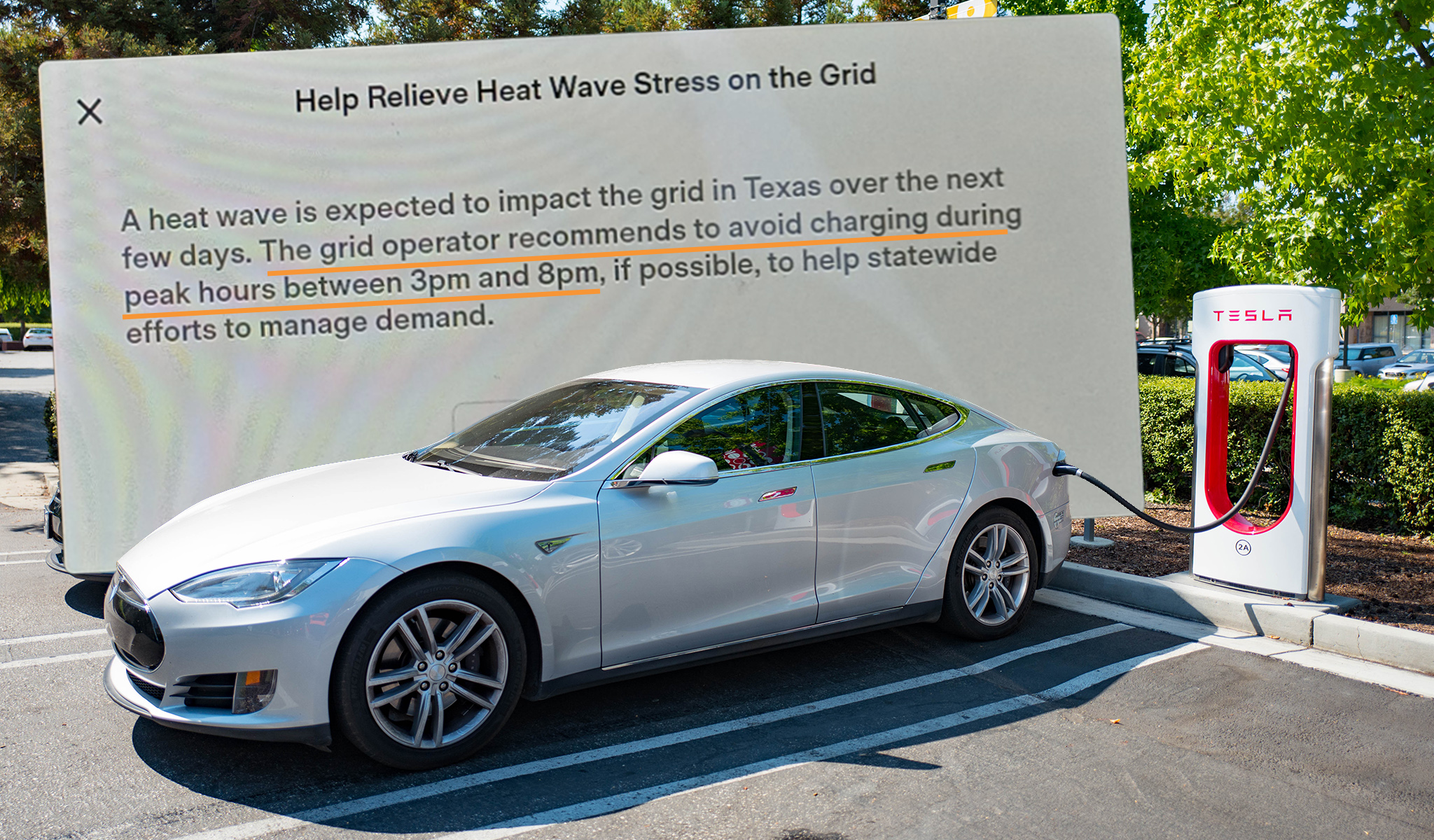

Texas’ power grid doesn’t exactly have the best of reputations, especially during inclement weather. Whether it’s a snowstorm or an extreme heatwave, the Lone Star State’s isolated power infrastructure seems to have a bit of an issue staying afloat when demand for power increases. And now, charging electric cars certainly isn’t helping.
The Electric Reliability Council of Texas (ERCOT) announced last week that six of its power generation facilities went offline following a high demand for power amid a heatwave. During the outage, the six stations would have produced enough electricity to power more than half a million homes. Electric automaker Tesla, which is now headquartered in the state, followed up by asking owners of its vehicles to avoid charging their cars during peak hours in order to help prevent a further increase in demand for electricity.
“A heatwave is expected to impact the grid in Texas over the next few days,” reads a photo of a message pushed to Tesla vehicles in Texas posted to Reddit last week. “The grid operator recommends avoiding charging during peak hours between 3 pm and 8 pm, if possible, to help statewide efforts manage demand.”
The National Weather Service says that the average temperature in the Dallas area for the month of May is around 73 degrees. During the recent heatwave, average temperatures rose above 83 and spiked as high as 94 degrees. A week later, however, things aren’t cooling down much. In fact, that goes for nearly half of the country as summer-like weather is expected to blanket the southeastern U.S. with temperatures above 90 degrees this weekend.
For EV owners in Texas, conserving electricity doesn’t just mean charging during off-peak hours. It also means adjusting driving habits—perhaps driving less overall or not turning the air conditioning down quite as far. Given that Texas also has the third-highest number of electric cars registered in the entire United States, it’s easy to see how reducing the number of EVs charging at one time could reduce the stress on an already taxed grid.
According to research conducted by AAA, EVs can experience up to a 17 percent drop in range with the air conditioning on in 95-degree weather. Tesla has previously disputed this figure, according to The Verge, as have owners. However, there is one clear way to ensure that a vehicle is spending less time plugged in: don’t take frequent, short trips that allow the cabin to become hot between drives. Maintaining a set temperature consumes less energy than cooling a sun-heated cabin, so reducing the number of short trips may prevent the need to plug in as frequently during a time when the power infrastructure is in high demand.
Another possibility to help ease grid issues in the future could be a technology found in some EVs called bidirectional charging. By using the stored energy in an EV’s battery pack, a vehicle can deliver power back into the home through the same connector it uses to charge. Presently, Tesla does not offer this capability in its vehicles. This could be immensely useful during a power outage, or to simply alleviate grid load during peak hours. Once power is restored or off-peak hours are reached, the vehicle can then resume charging. States like California have even launched pilot programs to pay owners to use vehicle-to-grid charging capabilities in order to build resiliency into its own troubled grid—something Texas might also benefit from.
Got a tip or question for the author? Contact them directly: rob@thedrive.com